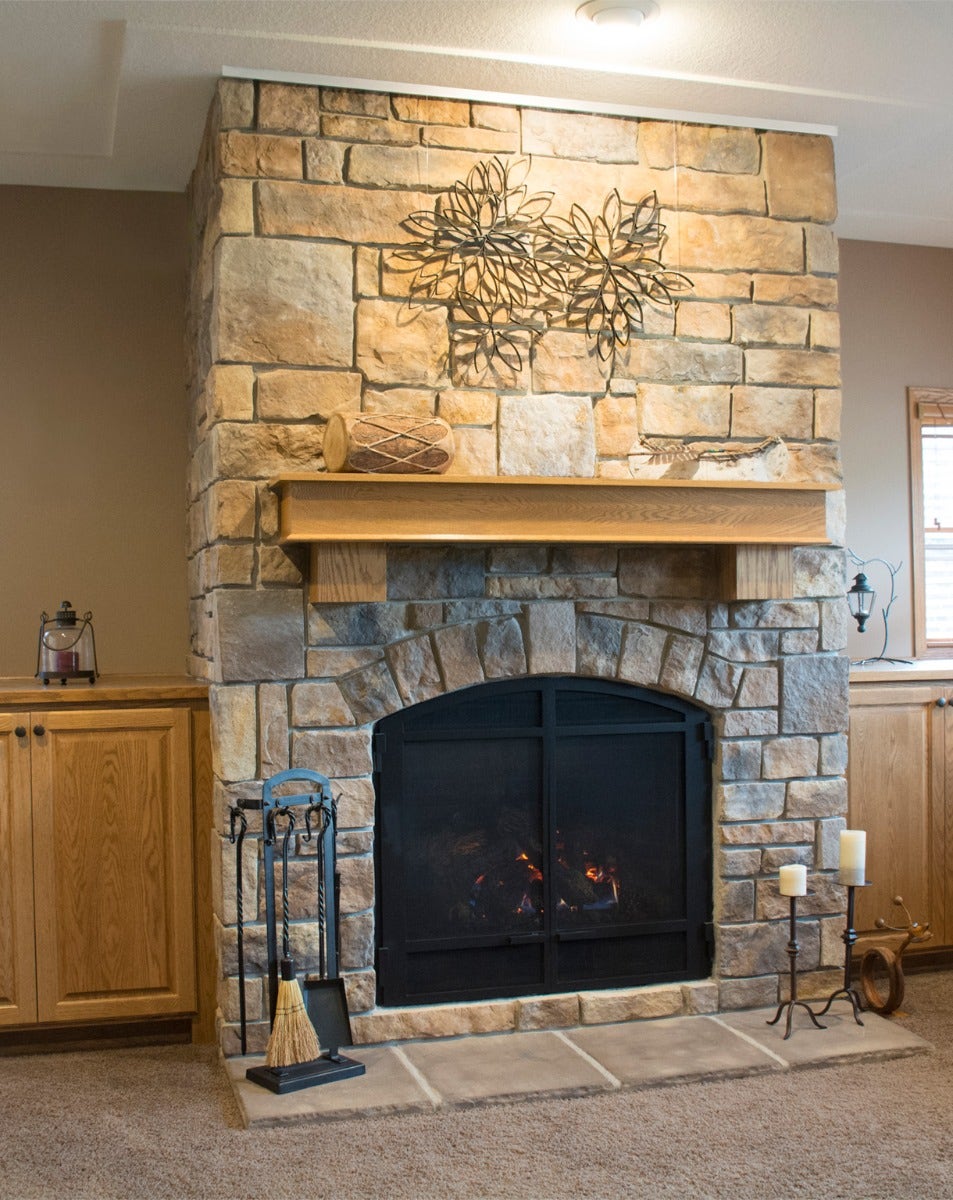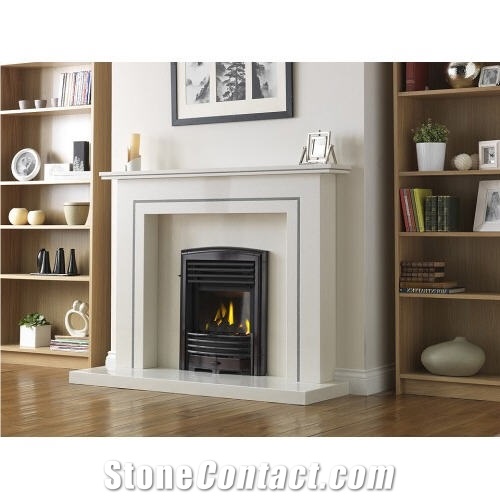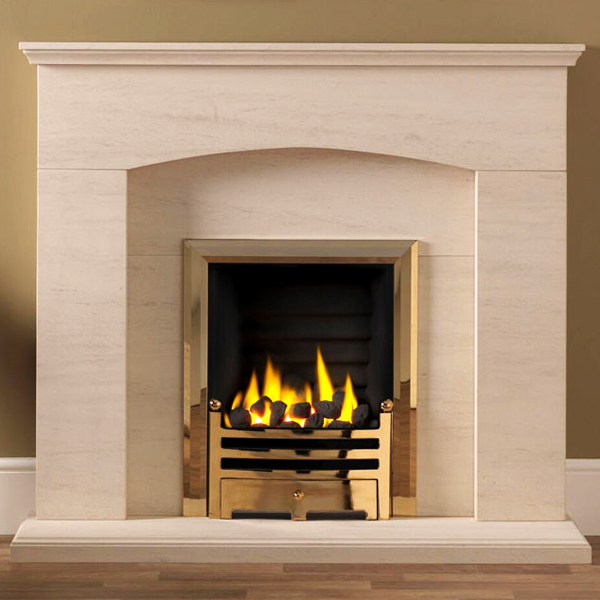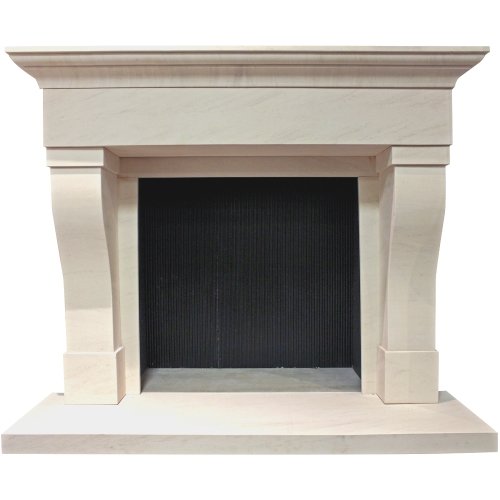The first time I saw a classic Portuguese stone fireplace, I was enthralled in a centuries-old farmhouse in the Alentejo. Unlike the brick fireplaces I grew up with in America, this gigantic stone structure dominated the space with its imposing presence while also creating a profound sense of intimacy. Over the last decade, I’ve refurbished several homes with these unusual fireplaces, each with its own set of traits that reflect Portugal’s rich regional culture. What impresses me the most is how these fireplaces function not only as heating sources, but also as the focal point of Portuguese household life, expressing traditional values such as family, hospitality, and place.
The Rich History of Portuguese Stone Hearths
Portuguese stone fireplaces grew from simple cooking hearths to complex status symbols that reflected a family’s wealth and artistic sensibility. I’ve followed their evolution through several historical sites, noticing how Roman influences mixed with Moorish design aspects during centuries of occupation. The ensuing synthesis produced various regional styles that still define Portuguese architecture today. What struck me most about these fireplaces is how they symbolize Portugal’s multifaceted cultural character, combining functional necessity with artistic expression.
During my travels to rural museums in northern Portugal, I observed fireplaces from the 16th century that included intricate stone carvings portraying religious images, family crests, and agricultural motifs. These were not just decorations, but visual storytelling components that preserved family history and local customs. The craftsmen who built these masterpieces frequently worked without formal training, handing down techniques from generation to generation through hands-on apprenticeship. Their legacy lives on in the unique regional variants that can still be seen across the country.
While modern heating technologies are increasingly being used in Portuguese houses, many families continue to use old stone fireplaces as markers of cultural history. Even in refurbished buildings with central heating, the fireplace serves as a focal point for gatherings and festivities. This enduring cultural commitment reflects much deeper than utilitarian reasons, tying current Portuguese homeowners to centuries of domestic traditions. This continuity is especially moving to me in today’s quickly changing world, where visible linkages to the past are becoming increasingly rare.
Regional Variations in Portugal
Northern Portuguese fireplaces, particularly in the hilly Trás-os-Montes region, feature tough granite construction designed to withstand harsh winter weather. I’ve seen examples with gigantic lintels and deep hearths built to burn large logs throughout the winter months. The practical design usually includes built-in stone benches known as “conversadeiras” where family members can sit near to the warmth. These northern designs emphasis use over decoration, but even the most basic examples show intelligent proportions and meticulous stonework, elevating them above plain utilitarian structures.
Central Portugal’s fireplace designs have a stronger Moorish influence, with more ornate carvings and bright azulejo tile accents encircling the stone structure. During my research trips to Beira and Ribatejo, I captured exquisite specimens of ornate limestone carved into floral or geometric motifs. These regions had less severe winters, but they retained indoor cooking practices that influenced fireplace proportions and features. The end product is a more refined appearance that mixes functional cooking requirements with ornamental components that highlight local limestone obtained from neighboring mountains.
Southern Portuguese fireplaces, particularly in the Algarve and Alentejo districts, have characteristic whitewashed exteriors that complement the local architecture. I’ve repaired numerous specimens with distinctive tapered chimney stacks that make strong visual statements on building facades. Inside, these fireplaces frequently feature smart built-in storage niches for cooking tools or ornamental items. The design represents adaptability to warmer winters while preserving cultural cooking customs, particularly bread baking and slow-cooked stews, which are still area specialties today. These southern variants beautifully highlight how environmental influences influence architectural features over time.

Traditional Construction Techniques
Any real Portuguese stone fireplace is built upon a careful selection of local materials. I’ve dealt with stonemasons who can identify quarry locations based only on the color differences and mineral composition of historic fireplace stones. This knowledge reflects years of competence passed down through families and guilds. Traditional construction begins with enormous foundation stones providing structural support, followed by precisely formed pieces that form the firebox and outer framework. The most accomplished artisans operate without mortar on the visible sides, producing tight joins with precise stone cutting processes.
Chimney construction requires specialist knowledge to maintain adequate ventilation and minimize smoke entry into living spaces. I’ve studied classic approaches like gradually tapering internal dimensions and strategically placing smoke shelves to achieve optimal airflow patterns. Portuguese masons found these answers through centuries of practical experimentation rather than formal engineering education. What strikes me the most is the intuitive understanding of thermodynamics that these architects possessed, resulting in systems that perform successfully while predating our scientific understanding of heat transfer and air movement principles.
The finishing technique has typically used specialized tools to texture visible stone surfaces based on regional preferences. In the north, rougher finishes highlight the granite’s natural character, whereas central Portugal prefers smoother limestone surfaces with artistic carving. The most time-consuming process is installing the “verga,” a gigantic stone lintel that spans the fireplace entrance and must withstand significant weight while preserving perfect proportions. This crucial component frequently has the most intricate decorating, making it the visual focal point that attracts the attention and admiration of visitors and family members gathered around the fireplace.
Integration with Portuguese Home Design
In traditional Portuguese dwellings, the fireplace serves as an organizing concept around which other architectural components are arranged. To keep this basic interaction between fireplace and living area, I’ve kept original design in my refurbishment projects whenever possible. The hearth usually supports one wall of the main social area, with furnishings arranged to encourage conversation while benefiting from radiated heat. This layout reflects centuries-old values that prioritize social engagement and practical comfort above rigid formal arrangements found in other European traditions.
The huge outside chimney constructions of Portuguese fireplaces produce distinct architectural silhouettes that characterize regional building styles. I’ve photographed hamlet scenes with dozens of whitewashed chimney stacks that form rhythmic visual patterns over slopes. These outside components provide more than just ventilation; they frequently include small roofed openings for meat smoking or protected places for outdoor grilling in the summer. The combination of these outside features and interior spaces exemplifies smart architectural thought that enhances functionality while producing visually appealing building forms.
In contemporary renovations, I’ve assisted customers in converting historic fireplace areas to modern living arrangements while maintaining their cultural value. Installing efficient wood-burning inserts within original stone structures, using discreet lighting that showcases historic stonework, and designing flexible seating configurations that support both traditional and contemporary social interactions are all possible solutions. These modifications enable Portuguese homeowners to preserve architectural heritage while enjoying modern conveniences. The most effective renovations keep the fireplace as the psychological heart of the home, retaining its historic role as a meeting area even as its heating function becomes secondary rather than vital.
The Cultural Significance Beyond Heating
Portuguese fireplaces were traditionally used as the major cooking facility in rural households, influencing both construction and family routines. I’ve photographed various examples of specific niches for bread baking, pot hanging systems, and stone or copper water heating reservoirs built into the structure. These cooking activities influenced everyday routines and emphasized the fireplace’s key position in family life. Many Portuguese families still use traditional cooking methods for special occasions, connecting them with previous generations through shared gastronomic experiences around the stone hearth.
In Portuguese culture, the fireplace area has traditionally been used for key family rites and life transitions. I’ve gathered stories from elderly villagers about how babies were first introduced to the family at the hearth, marriages were celebrated with unique fireplace decorations, and deceased family members were remembered with memorial gatherings around the ancestral flame. These traditions imbued the physical form with great emotional significance beyond its functional duties. Many families kept particular decorative items that were only utilized on special occasions, transforming the ordinary fireplace into a ceremonial area for crucial life events.
Portuguese folklore offers several myths and superstitions about the fireplace, demonstrating its psychological significance in traditional culture. During my research, I documented ideas about maintaining the family flame, proper protocols for starting the first fire in a new home, and symbolic things placed within the fireplace structure during construction to ensure good luck. These cultural behaviors demonstrate how the fireplace served as a barrier between household safety and external threats, both physical and spiritual. The endurance of these ideas, even in modernized settings, indicates the fireplace’s long-lasting symbolic potency in Portuguese cultural imagination and family identity.
Preserving and Adapting Ancient Traditions
The artisan knowledge required to construct authentic Portuguese stone fireplaces is facing serious challenges today, as traditional apprenticeship networks fade. I’ve worked with several expert stonemasons in their seventies who are concerned about finding acceptable apprentices to continue practicing their specific methods. In response, various area preservation organizations have launched documentation projects and training programs in an effort to preserve this intangible cultural legacy before it is lost. These initiatives include developing thorough technical manuals, creating video documentation of old procedures, and establishing specialized certification programs to recognize genuine workmanship.
Modern building codes pose additional obstacle to retaining authentic Portuguese fireplace customs. During rehabilitation jobs, I’ve had to handle intricate code requirements that often conflicted with traditional construction methods. Hidden steel reinforcement within classic stonework, modern venting systems camouflaged within old chimney structures, and the development of custom glass doors that exceed safety standards while keeping visual authenticity are all examples of creative solutions. These changes necessitate close coordination among historical specialists, modern engineers, and building officials prepared to strike acceptable balances between safety standards and cultural preservation objectives.
Environmental concerns regarding wood burning have encouraged improvements in fireplace efficiency while retaining traditional aesthetics. I’ve worked with specialized fabricators to create hybrid systems that blend conventional stone structure with high-efficiency inserts or alternate fuel sources. These modifications enable the continued use of ancient fireplaces while lowering pollution and fuel consumption. The most successful ways preserve the original architectural principles while implementing necessary technological advancements concealed within the structure. This balanced approach acknowledges both the cultural significance of traditional forms and the practical imperative of environmental stewardship, ensuring that Portuguese fireplace traditions are viable for future generations.
How do Portuguese stone fireplaces differ from other European styles?
Portuguese fireplaces stand out for a variety of reasons, as I’ve observed throughout my restoration experience. Their vast scale in comparison to room size often exceeds that of other European traditions, with buildings frequently projecting greatly into the living space rather than being recessed into walls. The unusual exterior chimney forms generate architectural statements that may be seen from outside the structure, especially in southern regions where complex whitewashed chimney stacks become defining landscape features.
Portuguese architecture usually include built-in sitting pieces known as “conversadeiras” flanking the firebox, resulting in natural meeting places that shape social interactions. Local stone varieties provide unique regional color differences, ranging from northern granite to central limestone to southern schist. Perhaps most notable is how Portuguese fireplaces mix cooking and heating activities more fully than other European traditions, with specialized features for baking, roasting, and water heating built directly into the structure rather than treated as separate kitchen parts.
How much does it cost to construct an authentic Portuguese stone fireplace?
According to my experience supervising multiple restoration projects, building an original Portuguese stone fireplace in today’s market requires a large expenditure. Materials alone typically price from €5,000 to €12,000, depending on stone kind, size, and decorative complexity. The most expensive component is specialist labor, as appropriate building necessitates professional stonemasons with traditional knowledge, who often charge €200-300 per day and can take 3-6 weeks to complete a big project.
Engineering services to assure structural integrity, permits and inspections to comply with modern building rules, and specialist stone cutting and polishing tools are all additional charges. Transportation costs for stone can be high, especially when matching materials from certain historic quarries to existing building. A totally accurate reproduction normally costs between €15,000 and 35,000. More economical solutions include hybrid systems that use thin stone veneer over modern materials (saving 40-50%) or using salvaged components from demolished historic structures, which preserves true craftsmanship while potentially lowering costs.
Can Portuguese stone fireplaces adhere to modern building codes and efficiency standards?
This question arises in almost every repair job that I supervise. Traditional Portuguese fireplaces can meet with modern requirements, but this requires intelligent alteration rather than literal historic imitation. The principal code problems include clearance from combustible materials, floor protection requirements, and emissions restrictions. I often collaborate with engineers to design hidden steel reinforcement that ensures structural stability while maintaining traditional looks. Modern fireboxes with suitable insulation and sealed glass doors can be installed beneath traditional stonework, significantly increasing efficiency while keeping visual authenticity.
Specialized venting systems can be hidden within regular chimney structures to meet current safety regulations. The resulting hybrid systems are typically 60-75% efficient, compared to 15-20% for fully old structures. Most building authorities will approve reasonable allowances for historic preservation if sufficient documentation shows that the modifications preserve the fundamental character-defining traits while resolving safety issues. Working with officials early in the planning phase and presenting precise technical drawings that demonstrate how modern criteria will be met will assist gain the necessary permissions.
How should I maintain and care for my Portuguese stone fireplace?
Understanding your exact stone type is the first step in proper maintenance, as different stones demand different ways to upkeep. For my clients who have limestone fireplaces, I recommend applying proper breathable sealants on an annual basis to prevent smoke and soot penetration while enabling the stone to discharge its natural moisture. Regular cleaning should be done with gentle, pH-neutral cleaners designed specifically for natural stone, rather than acidic or abrasive solutions that might harm ancient surfaces.
Structural maintenance includes an annual inspection of mortar joints, particularly around the firebox where heat cycling accelerates deterioration, as well as rapid repointing with appropriate old lime-based mortars rather than contemporary cement. Chimney systems should be professionally cleaned at least once a year if they are used often, with special care paid to creosote buildup in neck areas.
The firebox benefits from traditional maintenance using natural materials, such as applying traditional olive oil soap to darker stones on occasion, which develops a mild protective patina while increasing natural color variety. Wood storage should have an adequate moisture level (less than 20%) to avoid excessive smoke and creosote production, which can stain surrounding masonry.
What are the best woods to burn in a Portuguese stone fireplace?
Traditional Portuguese fireplace design evolved specifically around locally accessible hardwoods, and I strongly advocate preserving this link whenever possible. Oak (especially cork oak and holm oak, which grow abundantly in southern climates) produces long-burning, high-heat fires that are good for cooking and warmth. Olive wood, which is readily available throughout Portugal, burns slowly, produces little smoke, and emits a distinct pleasant aroma.
Eucalyptus, which is not native to Portugal but is now widely grown, should be used sparingly and only when fully seasoned, as its high oil content can cause excessive creosote buildup in chimneys. Historically, some wood varieties were associated with specific foods, such as citrus woods for fish preparation, vine trimmings for grilling, and pine cones for bread baking.
To ensure clean burning and minimal smoke production, all wood should be adequately seasoned for at least one year (ideally two), with moisture content below 20%. The traditional Portuguese practice of keeping a small, hot fire rather than a massive, roaring inferno not only protects the fireplace structure but also maximizes heat production while lowering smoke and boosting combustion efficiency.
Where can I learn about original Portuguese fireplace designs if I’m considering a renovation?
My personal research has yielded some useful resources, which I frequently refer to clients. Portugal’s ethnographic museums, such the Museu Nacional de Etnologia in Lisbon and smaller regional museums in Guimarães, Évora, and Faro, offer comprehensive documentation of regional variances through architectural drawings and pictures. The architectural archives of Portuguese universities, particularly the Technical University of Lisbon and the University of Porto, include rich historical documentation, including measured drawings of traditional structures.
Several outstanding works describe traditional Portuguese home architecture, notably “Arquitectura Popular em Portugal” by the Portuguese Architects Association, which categorizes regional building traditions, including fireplace styles. For a hands-on experience, I propose architectural heritage excursions focused on vernacular architecture, especially in conserved medieval towns like Monsaraz, Marvão, and Sortelha where traditional fireplaces are still intact and accessible.
Connecting with traditional craftspeople provides the most valuable education, and organizations such as the Portuguese Traditional Construction Association can arrange workshops and demonstrations with master stonemasons who continue to use traditional techniques, providing invaluable insights that books and museums cannot provide.
Portuguese Limestone Stone Fireplace Mantel : 57″
Portuguese Limestone u2013 GlowFire Stoves and Fireplaces
Related Posts:











